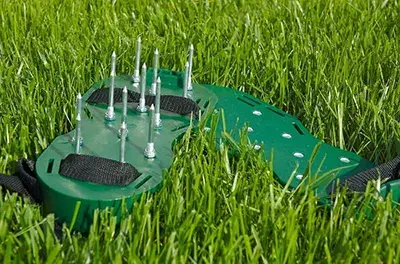It’s Feeling Chilly in Texas!
The winter season calls for some extra care directed towards your plants! The cold temperatures of wintertime can damage the health and appearance of plants, so it’s important to understand the necessary precautions to prevent that from happening.
In today’s blog post, we’ll be discussing pruning and frosts and freezes. Each of these topics provides very important methods to follow in order to maintain the best health of your plants.
Frosts & Freezes
Texas weather makes frosts and freezes unpredictable and the sudden changes in temperature can actually be extremely harsh for the durability of your plants.

Your plant may experience damage from freezes and frosts which most commonly produce an issue when frozen water within a plant thaws. The thawing process is damaging for the plant as the frozen water cracks as it melts, damaging cell walls, leaves, and stems. Not all plants will hold the same amount of frozen water which is why the damage varies for plants based on:
- Water retention
- Weather extremity
- How each plant copes with the cold
Plants may react to cold injuries by losing just a few leaves or completely dying, leaving behind a root system or seeds to sprout new life.
Potted plants are especially sensitive to frosts and freezes. The soil within the container is not above freezing like ground soil. As a result, there is extreme damage to the roots.
Creating a Cozy Environment
For the plants which are susceptible to frosts  and freezes, add a covering such as a plastic tarp or a blanket. Place the covering over the plant on a makeshift frame (like yard stakes) to avoid crushing the plant structure. The covering should reach the ground to retain the correct amount of heat in the soil. Remember, plants need sunlight and air! Remove the covering throughout the day so those plants get a peek of sunshine and a breath of crisp air.
and freezes, add a covering such as a plastic tarp or a blanket. Place the covering over the plant on a makeshift frame (like yard stakes) to avoid crushing the plant structure. The covering should reach the ground to retain the correct amount of heat in the soil. Remember, plants need sunlight and air! Remove the covering throughout the day so those plants get a peek of sunshine and a breath of crisp air.
In addition to adding a covering to retain heat from the ground, you may also use supplement heat to ensure the ultimate cozy environment for your plants during those harsh frosts and freezes. The first recommendation must be thoroughly inspected when set-up to ensure no hazards are at play. You can use Christmas lights to convey heat! String the lights around your plant, carefully avoiding contact with the plant itself as heated bulbs will cause damage to any part of your plant. After a careful inspection and assurance of no safety hazard, cover both the plant and the lights to contain all the heat.
Our second recommendation is the use of a gallon jug full of water. How does a jug of water convey heat? It collects heat throughout the day and slowly releases the absorbed heat during the night. Position the jug of water close to your plant, avoiding contact as the condensation that will occur can cause your plants to freeze if contact is made. The jug is in addition to the covering; leave the water by the plant during the day while the sun is shining and cover-up at night to release all the absorbed heat!
Another method to retain heat within the soil is to cover the base of your plants with mulch. It is recommended to use leaves as mulch since they provide the right amount of protection from the cold and do not bury your plant or restrict irrigation to the soil as thicker mulches do. Thick mulches are still an option, just be sure to pull back the thick layer when watering your plant to allow the correct amount of nourishment to reach the roots.
Quench the Thirst!
Pruning
Before you head out to make some fancy changes to your plants, let’s discuss the appropriate approaches and methods for plant pruning.
- Why Should You Prune?
Purposes for pruning include adding shape, removing dead or damaged branches, containing adventurous plants in their designated areas, maintaining plant height or structure, encouraging rejuvenation and flower/fruit growth, and training new plants to improve health and prevent future pruning.
For most plants, a perfect time to prune is late winter before spring welcomes new growth.

- How Should You Prune?
Shrubs should be sheared in a natural shape. Avoid pruning practices that result in top-heavy bushes as this shape limits growth and increases unnecessary shade at the base of the plant. Shrubs may be pruned using a method called thinning cuts which selectively severs shoots where a side shoot is attached.
Young trees should be trained using pruning to encourage strong, healthy growth. Remember to keep the end result of the tree in mind throughout the pruning process. Although difficult, twin trunks may not be allowed to continue to grow and one of the trunks must be removed. It is easiest to make small cuts that heal quicker than large removals of limbs when the tree is fully grown.
Since narrow angled branches are weak in comparison to wide-angled branches, all “V” shaped, crossing, or rubbing branches must be removed. Leave small shoots to grow up to an inch in diameter before removing them. The leaves of these little shoots will produce nourishment for the growing tree and improve strength and health!
When cutting branches off your tree, make sure to create proper cuts that will heal faster. Avoid leaving stubs where a branch used to exist as this will welcome decay. Additionally, don’t cut limbs all the way flush to the tree as a larger cut will be made and slow the healing process. When removing larger limbs from grown trees, start the pruning process by cutting 1/3 of the way through in an upwards direction from beneath the limb. Then, transition to the top of the limb and cut downwards. Finally, finish the removal process by making a cut just outside the natural branch collar.
- Pruning Reference Chart:


https://travis-tx.tamu.edu/about-2/horticulture/plant-problems-and-maintenance/frosts-and-freezes/?fbclid=IwAR1m7TJ0-ou7q5y_5Py58cHX10EPUpKJUAFgaDmrXzcmtWlZLBlOQ1DKCsY
https://travis-tx.tamu.edu/about-2/horticulture/ornamental-plants/pruning-trees-and-shrubs-with-a-purpose/?fbclid=IwAR0cgvwakEMAcYTfRLefvWNrrLH0GhR7rdGhoY8CLR7xYzmNrSa7CzmyXyo#Best




